2015 Social Media in Disasters
Download as pptx, pdf6 likes1,694 views
Presentation delivered to the El Dorado County Public Health Preparedness Workgroup.
1 of 21
Downloaded 31 times

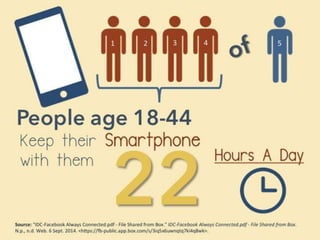

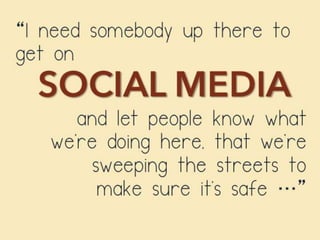
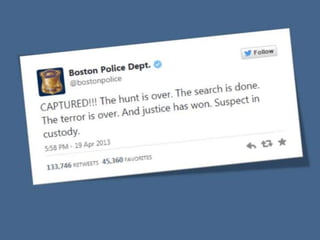





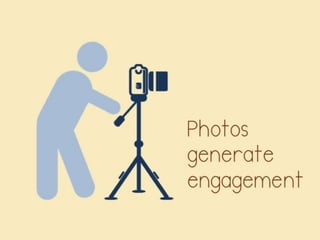





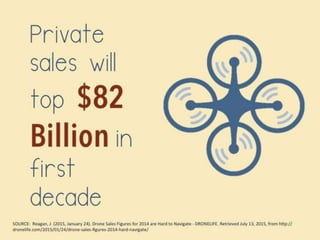

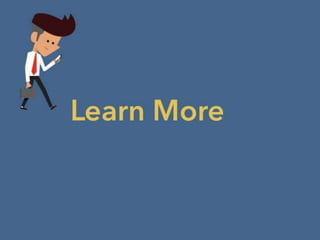


Ad
Recommended
Four Social Media Strategies for CERT
Four Social Media Strategies for CERTMary Jo Flynn, MS, CEM
╠²
This document provides four social media strategies for CERT (Community Emergency Response Team) programs. It recommends layering social media platforms to distribute different types of content, such as long articles on professional groups and rapid information updates on short-form platforms. It also suggests creating a content calendar to schedule posts across various topics and audiences. Additionally, it stresses the importance of safety and security when using social media. Finally, it advises making social media accessible to all community members.Survey Toolbox 2006
Survey Toolbox 2006Mary Jo Flynn, MS, CEM
╠²
The document outlines a comprehensive guide for conducting surveys, emphasizing the importance of well-constructed questions and the use of data to make informed decisions. It covers various types of questions (open-ended, multiple-choice, ranking, rating) and their advantages and disadvantages, as well as strategies for analyzing and presenting the data collected. Additionally, it touches on the political implications of surveys and provides resources for sample size calculations and online survey tools.S4SCON 2019 Augmenting Alert and Warning with Social Media
S4SCON 2019 Augmenting Alert and Warning with Social MediaMary Jo Flynn, MS, CEM
╠²
This document discusses augmenting alert and warning systems with social media. It summarizes the existing alert and warning landscape including Wireless Emergency Alerts (WEAs), state and local alert systems, and future technologies. It provides recommendations from social science research to improve alerts, including using fear motivation but not for preparedness, confirming information through "milling" or discussion, using longer messages and sequential messaging, including images and maps, and leveraging trusted community influencers. The goal is to maximize public receipt and response to emergency messages.2018 IAEM Evacuating the Driverless Car and Other Technologies Changing Our P...
2018 IAEM Evacuating the Driverless Car and Other Technologies Changing Our P...Mary Jo Flynn, MS, CEM
╠²
The document discusses the impact of emerging technologies, such as driverless cars and IoT integration, on public safety and evacuation strategies. It highlights the need for improved communication methods, like sending alerts to vehicles, and the importance of alternative fueling options during evacuations. Additionally, it emphasizes the potential of earthquake early warning systems to automate responses and enhance community safety.JIC checklist
JIC checklistMary Jo Flynn, MS, CEM
╠²
The document outlines social media strategies for effective communication during a crisis, emphasizing the use of various platforms such as Facebook, Twitter, Instagram, and YouTube. Key recommendations include using multiple visuals in posts, engaging with users through two-way communication, and providing updated information via pinned posts and hashtags. Additionally, it suggests creating maps for emergencies, utilizing text and audio resources, and targeting messages to specific communities.Set up a virtual operations support team (vost) to help in crises
Set up a virtual operations support team (vost) to help in crisesMary Jo Flynn, MS, CEM
╠²
The document outlines the establishment of a Virtual Operations Support Team (VOST) to aid in crisis situations, managed by a team leader who coordinates missions and information gathering. VOST comprises various professionals, including public information officers and emergency managers, and focuses on skills such as rumor management and social media monitoring. Activation involves negotiating objectives with an agency liaison, while the document also provides insights on creating and training VOST teams.Policy Considerations for Autonomous Vehicles in Disasters
Policy Considerations for Autonomous Vehicles in DisastersMary Jo Flynn, MS, CEM
╠²
The document discusses several policy considerations for autonomous vehicles during disasters and evacuations. It notes that autonomous vehicles rely on sophisticated mapping and sensor data that could be disrupted during disasters. This could impact evacuation routing. It also discusses concerns about transportation access for people with disabilities. As fewer people own private vehicles due to ride-sharing, evacuation planning will need to account for reliance on these services. The document calls on emergency managers to address these issues in legislation and planning to ensure autonomous vehicles can support evacuation efforts.MDEMA Social Media in Disasters
MDEMA Social Media in DisastersMary Jo Flynn, MS, CEM
╠²
This document discusses best practices for using social media to distribute information during disasters like floods. It recommends setting up distribution channels on platforms like Facebook, Twitter, and websites. The core content areas to focus on include evacuation orders, donations, photos/videos, and safety/recovery actions. Maps should display evacuation areas, shelters, road closures, and supply locations. Lessons learned include dedicating staff to graphics/video, ensuring websites are updated regularly, practicing live videos, adding closed captions to videos, and making information accessible to all.JIC Workshop - Maryland Emergency Management Associaiton
JIC Workshop - Maryland Emergency Management AssociaitonMary Jo Flynn, MS, CEM
╠²
Mary Jo Flynn is a Public Information Officer for Sacramento County Office of Emergency Services. As a PIO, her responsibilities include gathering and disseminating information, operations support, assigning spokespeople, and ensuring unified messaging. Some lessons learned from responding to atmospheric rivers and floods over 60 days include the need to better communicate with field PIOs, challenges maintaining staffing of the JIC over long activations, and ensuring accessibility of online content. Social media provided an alternative way to disseminate flood information when websites crashed.2017 GSMCON: Drones and Social Media
2017 GSMCON: Drones and Social MediaMary Jo Flynn, MS, CEM
╠²
The document discusses the use of drone technology in emergency management, highlighting the definitions of various unmanned aircraft systems (UAS) and government regulations for their operation. It outlines the requirements for obtaining a Certificate of Waiver or Authorization (COA) and emphasizes best practices and policy considerations for integrating drones into public safety operations. Furthermore, it explores potential applications of drones in disaster response, marketing, and public events, while noting common pitfalls and providing references for further information.Social Media to Market Your CERT Program
Social Media to Market Your CERT ProgramMary Jo Flynn, MS, CEM
╠²
This document provides guidance on using social media to market a Community Emergency Response Team (CERT) program. It recommends developing a content calendar that schedules posts around holidays, local events, training opportunities, and current events. Photos and videos are emphasized as ways to generate engagement from audiences. Live video best practices and different types of content for CERT programs are outlined. The document also provides tips for building content, using hashtags and other strategies to share information, developing media assets, and ensuring accessibility on social media platforms.Creating Content for Disasters 2016
Creating Content for Disasters 2016Mary Jo Flynn, MS, CEM
╠²
The document outlines best practices for creating engaging video content for disaster management communications, emphasizing the importance of quality production and clear messaging. It includes recommendations for essential equipment, production techniques, and strategies for effective audience engagement. Additionally, it offers guidance on preparing video press kits and resources for emergency communication, along with examples and links to useful tools.Enhancing Exercise Realism with Social Media
Enhancing Exercise Realism with Social MediaMary Jo Flynn, MS, CEM
╠²
This document discusses enhancing exercise realism through the use of social media. It provides examples of how social media can be incorporated into different types of exercises, from discussion-based exercises like seminars and tabletops to operations-based exercises like drills and full-scale exercises. Specific suggestions are given, such as using real social media posts for exercise injects, creating a closed-loop or fake social media environment for injects, and making a hotwash survey part of the demobilization process. Guidelines are also presented for evaluating exercises and assessing the successful completion of information dissemination and analysis tasks.Using Technology to Enhance Your CERT Program
Using Technology to Enhance Your CERT ProgramMary Jo Flynn, MS, CEM
╠²
Social media has had a tremendous impact on the first responder community and its use has grown significantly over the last several years. As a volunteer support to first responders and communities, CERT, has the ability to leverage social media tools and technology to improve volunteer programs and response to various community needs. Review the technology available to CERT to enhance your program and some of the best practices and guidelines.2015 Trends in Social Media and Emergency Management
2015 Trends in Social Media and Emergency ManagementMary Jo Flynn, MS, CEM
╠²
Presentation delivered at the Government Social Media Conference, Reno May 1, 2015 #GSMCON
Social media has evolved to become an integral part of disaster information flow. This session will identify the current trends, research and applications of social media in emergency management including the development of teams and identification of tools and resources to complement information sharing strategies and data analysis.Social Media JIC Decision Matrix
Social Media JIC Decision MatrixMary Jo Flynn, MS, CEM
╠²
The document outlines protocols for handling incoming messages related to life/safety issues, verifying information, and responding to public inquiries during incidents. It emphasizes the importance of routing messages to appropriate personnel, monitoring communications, and using approved talking points for public responses. Additionally, it includes guidelines for managing spontaneous volunteer arrivals and encouraging donations to reputable organizations.Social Media: Changing the Face of Response
Social Media: Changing the Face of ResponseMary Jo Flynn, MS, CEM
╠²
The document provides various resources and training classes related to the use of social media in emergency management. It highlights important reports and recommended networks for professionals in the field. Additionally, contact information for a key individual in emergency management is included.Social Media Monitoring Team in the Emergency Operation Center
Social Media Monitoring Team in the Emergency Operation CenterMary Jo Flynn, MS, CEM
╠²
Social media is part of everyday life, and emergency management is no exception. However, many agencies do not have the manpower to effectively leverage the social media space during and after a disaster. Virtual Operation Support Teams (VOST), as applied to emergency management and disaster recovery, is an agency assembled team whose effort makes use of new communication technologies and social media tools. These team members are "trusted agents" who can lend support via the internet to those on-site who may otherwise be overwhelmed by the volume of data generated during a disaster. These cadre of digital volunteers assist with several social media missions including: general monitoring, rumor identification and management, situation status visualization and so much more.2014 may iaem bulletin linked in
2014 may iaem bulletin linked inMary Jo Flynn, MS, CEM
╠²
The IAEM Bulletin discusses the significant role of social media, particularly LinkedIn, in enhancing emergency management professionals' networking and personal branding. It highlights tips for improving LinkedIn profiles and emphasizes the value of making connections through 'weak ties' rather than relying solely on close relationships. Additionally, it outlines upcoming opportunities at the IAEM annual conference for networking and utilizing LinkedIn for professional growth.2014 may iaem bulletin jifx
2014 may iaem bulletin jifxMary Jo Flynn, MS, CEM
╠²
The document summarizes the Joint Interagency Field Exploration (JIFX) event held in February 2014 at Camp Roberts, California. Participants at the event, which included emergency managers and technology companies, tested how social media and other data could help with situational awareness and decision making during disasters like Hurricane Sandy. While some technologies showed promise, participants found it difficult to identify useful information and noted disconnects between technology developers and end users. Lessons learned included the need to better define information and technology requirements prior to emergencies. The event highlighted challenges around privacy issues and ensuring accessible information can be effectively used.Using Social Media in Disasters
Using Social Media in Disasters Mary Jo Flynn, MS, CEM
╠²
Mary Jo Flynn is the Emergency Management Assistant Director. For more information, visit her profile at about.me/mflynn.CERT and Social Media
CERT and Social MediaMary Jo Flynn, MS, CEM
╠²
The document discusses the role of social media in Community Emergency Response Team (CERT) activities as of 2014, emphasizing engagement strategies such as sharing information and building networks. It encourages individuals to communicate their safety, amplify agency messages, and understand the emotional aspects of emergency management. Mary Jo Flynn from the Anaheim Fire & Rescue Department is also mentioned as a contact for further information.Vost white paper 2013
Vost white paper 2013Mary Jo Flynn, MS, CEM
╠²
This document outlines the concept and operations of a Virtual Operations Support Team (VOST) to help emergency management organizations monitor and engage with the public on social media during disasters. It discusses how VOST is a volunteer team that can help identify trends, rumors, and requests on social media to support public information officers overwhelmed by social media activity. The document provides details on VOST training, activation procedures, and sample mission types like amplifying official messages, identifying rumors, and assisting with damage assessment through social media monitoring and engagement.Incorporating social media in exercise design.slideshare
Incorporating social media in exercise design.slideshareMary Jo Flynn, MS, CEM
╠²
This document provides an overview of incorporating social media into exercise design. It discusses using social media for different types of exercises including discussion-based exercises like seminars and workshops, as well as operations-based exercises like drills and full-scale exercises. Considerations for using open and closed social media systems are presented. The document also provides examples of social media platforms and tools that can be used to design exercises, as well as resources and past incidents that can be used for exercise injects. Evaluation methods like online surveys are suggested.Social media monitoring tactics
Social media monitoring tacticsMary Jo Flynn, MS, CEM
╠²
The document outlines the essentials of social media monitoring, focusing on objectives, tools, and techniques for effective engagement. It emphasizes the importance of timely responses to community concerns, identifying rumors, and implementing strategies during emergencies or crises. Various tools, both paid and free, are suggested for monitoring social media to ensure relevant messages are addressed.Enhance your community engagement
Enhance your community engagementMary Jo Flynn, MS, CEM
╠²
The document discusses using social media and technology for community engagement. It recommends that organizations 1) establish social media policies and training, 2) choose whether to observe or engage in dialogue on social media, and 3) monitor messages through filtering to improve communications. It also suggests organizations identify their online brand and audience in order to 4) maintain credibility on social media. Monitoring tools and ways to establish an organization's credibility are presented.Social Media and Technology Handout
Social Media and Technology HandoutMary Jo Flynn, MS, CEM
╠²
The document provides various resources and links for getting started with social media in emergency management. It includes etiquette guidelines for Twitter and information about training from FEMA. Additionally, it offers contact information for key individuals and organizations involved in virtual operations support.Social media and technology
Social media and technologyMary Jo Flynn, MS, CEM
╠²
This document outlines the essential components of building an effective social media program for emergency management. It emphasizes the importance of audience identification, content planning, and the use of various technologies and platforms to enhance communication during disasters. Additionally, it provides best practices for engaging with the community and sharing information effectively.Investigating how the customary, freehold, and leasehold land tenure systems ...
Investigating how the customary, freehold, and leasehold land tenure systems ...AJHSSR Journal
╠²
ABSTRACT : This study aimed to investigate how customary, freehold, and leasehold land tenure systems in
Ngora District, Uganda, can be reformed to enhance agricultural productivity, with a focus on identifying effective
strategies and potential reforms. By examining the three prevalent land ownership systems, this research provides
critical insights into policy and practice improvements that could benefit the agricultural sector, local
communities, and the broader economy. The study was conducted in a district characterized by overlapping and
unclear land tenure systems, which have led to frequent disputes and hindered the adoption of modern farming
practices. A mixed-methods research design was employed, incorporating both quantitative and qualitative data
collection and analysis, to thoroughly assess the effects of these land tenure systems on agricultural productivity.
Advanced coding techniques, statistical methods, and analytical tools were used to systematically analyze the
data, revealing patterns, themes, and relationships between the variables. The study achieved a high response rate,
with 92% participation in in-depth interviews and 99.3% in the quantitative component, with a higher
representation of male respondents (71% in the expert group, 63% in the larger sample). The findings underscore
the importance of secure and well-regulated land tenure systems in promoting agricultural productivity and
addressing poverty and food insecurity in Ngora District. To improve agricultural outcomes, the study
recommends the adoption of sustainable farming practices and crop diversification, alongside collaborative efforts
by central and local governments to secure and protect land rights under all three tenure systems.
KEYWORDS : Customary, Freehold, and Leasehold Land Tenure Systems RupeeQŌĆÖs leaders who led with purpose and passion..
RupeeQŌĆÖs leaders who led with purpose and passion..RupeeQ
╠²
At @rupeeq_ , leadership means passion, purpose & ownership.
Respect to our doers, not just dreamers.
More Related Content
More from Mary Jo Flynn, MS, CEM (20)
JIC Workshop - Maryland Emergency Management Associaiton
JIC Workshop - Maryland Emergency Management AssociaitonMary Jo Flynn, MS, CEM
╠²
Mary Jo Flynn is a Public Information Officer for Sacramento County Office of Emergency Services. As a PIO, her responsibilities include gathering and disseminating information, operations support, assigning spokespeople, and ensuring unified messaging. Some lessons learned from responding to atmospheric rivers and floods over 60 days include the need to better communicate with field PIOs, challenges maintaining staffing of the JIC over long activations, and ensuring accessibility of online content. Social media provided an alternative way to disseminate flood information when websites crashed.2017 GSMCON: Drones and Social Media
2017 GSMCON: Drones and Social MediaMary Jo Flynn, MS, CEM
╠²
The document discusses the use of drone technology in emergency management, highlighting the definitions of various unmanned aircraft systems (UAS) and government regulations for their operation. It outlines the requirements for obtaining a Certificate of Waiver or Authorization (COA) and emphasizes best practices and policy considerations for integrating drones into public safety operations. Furthermore, it explores potential applications of drones in disaster response, marketing, and public events, while noting common pitfalls and providing references for further information.Social Media to Market Your CERT Program
Social Media to Market Your CERT ProgramMary Jo Flynn, MS, CEM
╠²
This document provides guidance on using social media to market a Community Emergency Response Team (CERT) program. It recommends developing a content calendar that schedules posts around holidays, local events, training opportunities, and current events. Photos and videos are emphasized as ways to generate engagement from audiences. Live video best practices and different types of content for CERT programs are outlined. The document also provides tips for building content, using hashtags and other strategies to share information, developing media assets, and ensuring accessibility on social media platforms.Creating Content for Disasters 2016
Creating Content for Disasters 2016Mary Jo Flynn, MS, CEM
╠²
The document outlines best practices for creating engaging video content for disaster management communications, emphasizing the importance of quality production and clear messaging. It includes recommendations for essential equipment, production techniques, and strategies for effective audience engagement. Additionally, it offers guidance on preparing video press kits and resources for emergency communication, along with examples and links to useful tools.Enhancing Exercise Realism with Social Media
Enhancing Exercise Realism with Social MediaMary Jo Flynn, MS, CEM
╠²
This document discusses enhancing exercise realism through the use of social media. It provides examples of how social media can be incorporated into different types of exercises, from discussion-based exercises like seminars and tabletops to operations-based exercises like drills and full-scale exercises. Specific suggestions are given, such as using real social media posts for exercise injects, creating a closed-loop or fake social media environment for injects, and making a hotwash survey part of the demobilization process. Guidelines are also presented for evaluating exercises and assessing the successful completion of information dissemination and analysis tasks.Using Technology to Enhance Your CERT Program
Using Technology to Enhance Your CERT ProgramMary Jo Flynn, MS, CEM
╠²
Social media has had a tremendous impact on the first responder community and its use has grown significantly over the last several years. As a volunteer support to first responders and communities, CERT, has the ability to leverage social media tools and technology to improve volunteer programs and response to various community needs. Review the technology available to CERT to enhance your program and some of the best practices and guidelines.2015 Trends in Social Media and Emergency Management
2015 Trends in Social Media and Emergency ManagementMary Jo Flynn, MS, CEM
╠²
Presentation delivered at the Government Social Media Conference, Reno May 1, 2015 #GSMCON
Social media has evolved to become an integral part of disaster information flow. This session will identify the current trends, research and applications of social media in emergency management including the development of teams and identification of tools and resources to complement information sharing strategies and data analysis.Social Media JIC Decision Matrix
Social Media JIC Decision MatrixMary Jo Flynn, MS, CEM
╠²
The document outlines protocols for handling incoming messages related to life/safety issues, verifying information, and responding to public inquiries during incidents. It emphasizes the importance of routing messages to appropriate personnel, monitoring communications, and using approved talking points for public responses. Additionally, it includes guidelines for managing spontaneous volunteer arrivals and encouraging donations to reputable organizations.Social Media: Changing the Face of Response
Social Media: Changing the Face of ResponseMary Jo Flynn, MS, CEM
╠²
The document provides various resources and training classes related to the use of social media in emergency management. It highlights important reports and recommended networks for professionals in the field. Additionally, contact information for a key individual in emergency management is included.Social Media Monitoring Team in the Emergency Operation Center
Social Media Monitoring Team in the Emergency Operation CenterMary Jo Flynn, MS, CEM
╠²
Social media is part of everyday life, and emergency management is no exception. However, many agencies do not have the manpower to effectively leverage the social media space during and after a disaster. Virtual Operation Support Teams (VOST), as applied to emergency management and disaster recovery, is an agency assembled team whose effort makes use of new communication technologies and social media tools. These team members are "trusted agents" who can lend support via the internet to those on-site who may otherwise be overwhelmed by the volume of data generated during a disaster. These cadre of digital volunteers assist with several social media missions including: general monitoring, rumor identification and management, situation status visualization and so much more.2014 may iaem bulletin linked in
2014 may iaem bulletin linked inMary Jo Flynn, MS, CEM
╠²
The IAEM Bulletin discusses the significant role of social media, particularly LinkedIn, in enhancing emergency management professionals' networking and personal branding. It highlights tips for improving LinkedIn profiles and emphasizes the value of making connections through 'weak ties' rather than relying solely on close relationships. Additionally, it outlines upcoming opportunities at the IAEM annual conference for networking and utilizing LinkedIn for professional growth.2014 may iaem bulletin jifx
2014 may iaem bulletin jifxMary Jo Flynn, MS, CEM
╠²
The document summarizes the Joint Interagency Field Exploration (JIFX) event held in February 2014 at Camp Roberts, California. Participants at the event, which included emergency managers and technology companies, tested how social media and other data could help with situational awareness and decision making during disasters like Hurricane Sandy. While some technologies showed promise, participants found it difficult to identify useful information and noted disconnects between technology developers and end users. Lessons learned included the need to better define information and technology requirements prior to emergencies. The event highlighted challenges around privacy issues and ensuring accessible information can be effectively used.Using Social Media in Disasters
Using Social Media in Disasters Mary Jo Flynn, MS, CEM
╠²
Mary Jo Flynn is the Emergency Management Assistant Director. For more information, visit her profile at about.me/mflynn.CERT and Social Media
CERT and Social MediaMary Jo Flynn, MS, CEM
╠²
The document discusses the role of social media in Community Emergency Response Team (CERT) activities as of 2014, emphasizing engagement strategies such as sharing information and building networks. It encourages individuals to communicate their safety, amplify agency messages, and understand the emotional aspects of emergency management. Mary Jo Flynn from the Anaheim Fire & Rescue Department is also mentioned as a contact for further information.Vost white paper 2013
Vost white paper 2013Mary Jo Flynn, MS, CEM
╠²
This document outlines the concept and operations of a Virtual Operations Support Team (VOST) to help emergency management organizations monitor and engage with the public on social media during disasters. It discusses how VOST is a volunteer team that can help identify trends, rumors, and requests on social media to support public information officers overwhelmed by social media activity. The document provides details on VOST training, activation procedures, and sample mission types like amplifying official messages, identifying rumors, and assisting with damage assessment through social media monitoring and engagement.Incorporating social media in exercise design.slideshare
Incorporating social media in exercise design.slideshareMary Jo Flynn, MS, CEM
╠²
This document provides an overview of incorporating social media into exercise design. It discusses using social media for different types of exercises including discussion-based exercises like seminars and workshops, as well as operations-based exercises like drills and full-scale exercises. Considerations for using open and closed social media systems are presented. The document also provides examples of social media platforms and tools that can be used to design exercises, as well as resources and past incidents that can be used for exercise injects. Evaluation methods like online surveys are suggested.Social media monitoring tactics
Social media monitoring tacticsMary Jo Flynn, MS, CEM
╠²
The document outlines the essentials of social media monitoring, focusing on objectives, tools, and techniques for effective engagement. It emphasizes the importance of timely responses to community concerns, identifying rumors, and implementing strategies during emergencies or crises. Various tools, both paid and free, are suggested for monitoring social media to ensure relevant messages are addressed.Enhance your community engagement
Enhance your community engagementMary Jo Flynn, MS, CEM
╠²
The document discusses using social media and technology for community engagement. It recommends that organizations 1) establish social media policies and training, 2) choose whether to observe or engage in dialogue on social media, and 3) monitor messages through filtering to improve communications. It also suggests organizations identify their online brand and audience in order to 4) maintain credibility on social media. Monitoring tools and ways to establish an organization's credibility are presented.Social Media and Technology Handout
Social Media and Technology HandoutMary Jo Flynn, MS, CEM
╠²
The document provides various resources and links for getting started with social media in emergency management. It includes etiquette guidelines for Twitter and information about training from FEMA. Additionally, it offers contact information for key individuals and organizations involved in virtual operations support.Social media and technology
Social media and technologyMary Jo Flynn, MS, CEM
╠²
This document outlines the essential components of building an effective social media program for emergency management. It emphasizes the importance of audience identification, content planning, and the use of various technologies and platforms to enhance communication during disasters. Additionally, it provides best practices for engaging with the community and sharing information effectively.Recently uploaded (11)
Investigating how the customary, freehold, and leasehold land tenure systems ...
Investigating how the customary, freehold, and leasehold land tenure systems ...AJHSSR Journal
╠²
ABSTRACT : This study aimed to investigate how customary, freehold, and leasehold land tenure systems in
Ngora District, Uganda, can be reformed to enhance agricultural productivity, with a focus on identifying effective
strategies and potential reforms. By examining the three prevalent land ownership systems, this research provides
critical insights into policy and practice improvements that could benefit the agricultural sector, local
communities, and the broader economy. The study was conducted in a district characterized by overlapping and
unclear land tenure systems, which have led to frequent disputes and hindered the adoption of modern farming
practices. A mixed-methods research design was employed, incorporating both quantitative and qualitative data
collection and analysis, to thoroughly assess the effects of these land tenure systems on agricultural productivity.
Advanced coding techniques, statistical methods, and analytical tools were used to systematically analyze the
data, revealing patterns, themes, and relationships between the variables. The study achieved a high response rate,
with 92% participation in in-depth interviews and 99.3% in the quantitative component, with a higher
representation of male respondents (71% in the expert group, 63% in the larger sample). The findings underscore
the importance of secure and well-regulated land tenure systems in promoting agricultural productivity and
addressing poverty and food insecurity in Ngora District. To improve agricultural outcomes, the study
recommends the adoption of sustainable farming practices and crop diversification, alongside collaborative efforts
by central and local governments to secure and protect land rights under all three tenure systems.
KEYWORDS : Customary, Freehold, and Leasehold Land Tenure Systems RupeeQŌĆÖs leaders who led with purpose and passion..
RupeeQŌĆÖs leaders who led with purpose and passion..RupeeQ
╠²
At @rupeeq_ , leadership means passion, purpose & ownership.
Respect to our doers, not just dreamers.
How to Buy Linkedin Accounts Safely And Effectively_ Expert Tips.pdf
How to Buy Linkedin Accounts Safely And Effectively_ Expert Tips.pdfhttps://vrtsmm.com/product/buy-verified-linkedin-accounts/
╠²
ŌŁÉŌŁÉŌŁÉŌŁÉŌŁÉŌŁÉŌŁÉŌŁÉŌŁÉŌŁÉ
If you want to more information just knock us ŌĆō Contact US
24 Hours Reply/Contact
Ō׿Telegram: @vrtsmm
Ō׿Email: Vrtsmm@gmail.com
Ō׿WhatsApp Number: +1(505)219ŌĆō9209
Ō׿More:https://vrtsmm.com/product/buy-verified-linkedin-accounts/Brown Minimalist Casual Fashion Collection Presentation.pdf
Brown Minimalist Casual Fashion Collection Presentation.pdfRealDarrah
╠²
https://www.canva.com/design/DAGgde2-3Iw/IyPIzZdeO7T2TFxRHUzc6w/view?utm_content=DAGgde2-3Iw&utm_campaign=designshare&utm_medium=link2&utm_source=uniquelinks&utlId=hdfbeda4c9bSocialBoss ŌĆö grow your social media presence!
SocialBoss ŌĆö grow your social media presence!SocialBoss
╠²
This presentation introduces SocialBoss, a service platform that empowers individuals, influencers, and brands to grow their social media presence across major networks. It explains the platformŌĆÖs features and how users can get started in just a few simple steps.TikTok Duet vs Stitch in 2025_ WhatŌĆÖs Best for Growth and Engagement
TikTok Duet vs Stitch in 2025_ WhatŌĆÖs Best for Growth and EngagementUfki
╠²
In the fast-evolving universe of shortŌĆæform video, TikTok has consistently reinvented how creators collaborate and converse. Two features Duet and Stitch have become cornerstones for interactive content, yet each serves a distinct purposeRollover offers kids wear clothing at competitive prices.
Rollover offers kids wear clothing at competitive prices.RolloverKidsCompany1
╠²
Rollover offers kids wear clothing at competitive prices. With fresh fashions, quality materials, and fun designs. ItŌĆÖs the Clothing brands In Pakistan that you can trust. Visit us at our 30+ stores or shop online. All orders will be delivered within 3-5 working days.Choosing the Best Social Media Marketing Agency in London: Why Social Angels ...
Choosing the Best Social Media Marketing Agency in London: Why Social Angels ...The Social Angels Angels
╠²
Finding the right social media marketing agency in London isn't merely a procurement exercise; it's an investment over time in relevance, credibility, and expansion. Best Website Designing Company in Mumbai
Best Website Designing Company in MumbaiJust for Galz
╠²
Website Designing Company in Mumbai
WordPress Website Development Company in Mumbai
WordPress Website Development Company
Best Website Designing Company in Mumbai
Model of Indigenous Forest Management in the Context of Protection and Fulfil...
Model of Indigenous Forest Management in the Context of Protection and Fulfil...AJHSSR Journal
╠²
ABSTRACT : Regulation of Indigenous Forests which are part of Social Forestry based on applicable laws and
regulations as stipulated in the Regulation of the Minister of Environment and Forestry of the Republic of
Indonesia Number 9 of 2021 Concerning Social Forestry Management. Obstacles in the management of
customary forests which that have been part of social forestry so far in the Province Riau, among others: First,
there is no customary forest legality. Second, in the field, there is still a ninik mamak dualism in the village so
that forest management is sometimes misplaced. Third, increasing the capacity of human resources to assist
indigenous peoples in managing customary forests. Fourth, the budget, relatively limited program funding
constraints. Fifth, in addition to assistance and financing, in the future social forestry schemes including
customary forest management need to be simplified. To overcome the above obstacles, several things need to be
done, including: first, availability of an adequate budget provided by the government. Second, Simplifyingy
licensing and administration processand simplified customary forest schemes so that they can be easily
understood. Third, increasing the capacity of human resources for community assistance in managing social
forestry. Therefore there is a need for a Model in Participatory Customary Forest Management by emphasizing
management based on the active participation of indigenous peoples in customary forest management.
Keywords : Indigenous Forest, Protection, Indigenous Peoples5Data Inc: Leading Mobile App Development Company
5Data Inc: Leading Mobile App Development Company5dataInc
╠²
Why settle for average apps? 5Data Inc delivers top-tier mobile app development for unmatched performance. @ https://5datainc.com/application-development/How to Buy Linkedin Accounts Safely And Effectively_ Expert Tips.pdf
How to Buy Linkedin Accounts Safely And Effectively_ Expert Tips.pdfhttps://vrtsmm.com/product/buy-verified-linkedin-accounts/
╠²
Choosing the Best Social Media Marketing Agency in London: Why Social Angels ...
Choosing the Best Social Media Marketing Agency in London: Why Social Angels ...The Social Angels Angels
╠²
Ad
